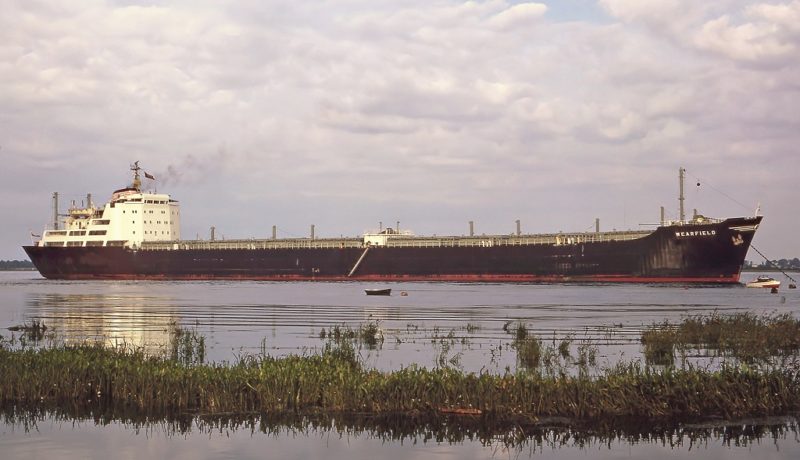
Charles Samuel Hunting at the age of 21 years came ashore after serving a sea-going apprenticeship in 1874 to learn about the operation and management of tramp shipping in a shipbroker’s office. Charles Hunting, his father, was a Newcastle veterinary surgeon of 51 years of age, who originally hailed from the Suffolk market town of Saxmundham, and who also supplied equipment to the booming coal industry of County Durham in the second half of the 19th century. He then purchased two wooden sailing ships, Sylvia and Genii, for a total of £16,375 in order to set his son up in business with a partner shipbroker named W. J. Pattinson. Their first office was at 38, Newcastle Quayside and with Mr. Pattiinson’s expertise in ship chartering Sylvia was chartered on the North Atlantic run and Genii to India. They made such good profits that after only three years Hunting & Pattinson took over the management of a new iron steamer from Charles Mitchell of Newcastle at his yard at Low Walker, named Joseph Ferrens of 1,803 grt and 2,600dwt and costing £28,000.
The wife of Joseph Ferrens launched the ship on 9th October 1877 and her husband held the greatest number of 64ths shares. The ship was square-rigged on the foremast and she carried two sets of sails. However, she was lost on 1st December 1879 in a gale 100 miles west of Ushant while on a voyage from the Tyne to Lisbon with a cargo of coal. Sylvia and Genii were sold in 1879 and 1881, and replaced by five iron tramps named Yoxford, Wheatfield, Gleadowe, R. F. Matthews and Joseph Ferrens (2). This latter ship fared no better, being wrecked to the north of Cape St. Vincent while carrying coal from Newport to Palermo in 1886.
Yoxford sailed on her maiden voyage from the Tyne on 31st July 1878 to New York, but foundered on the return leg of the voyage to Le Havre. Wheatfield stranded in fog at Blackgang Chine, Isle of Wight while on passage from New York to Leith with general cargo on New Year’s Eve in 1882. R.F. Matthews was the only one of the five tramps to give any great length of service to her owner, and after 34 years of worldwide tramping was sold to Italian and Turkish owners to give another 16 years of service until she was scrapped in 1928 after a career of fifty years.
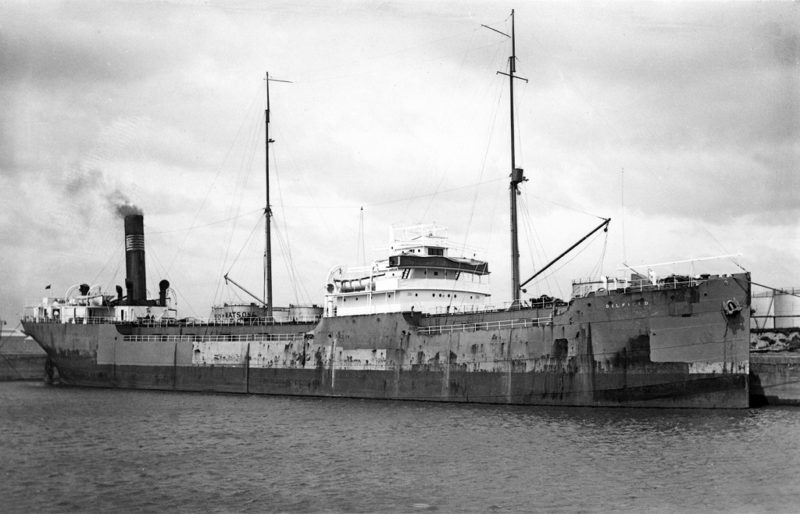
Altogether, a total of 14 dry cargo steam powered tramps and one bulk oil tanker were added to the Hunting fleet in the first twenty years by Charles Samuel Hunting. Yoxford (2) continued the run of bad luck when she stranded on the Dutch coast in bad weather in 1889. Refloated, she resumed tramping in 1891 before being finally wrecked on 8th January 1896 on Alcranes Reef in the Gulf of Mexico while on a voyage from Port Limon in Costa Rica to Vera Cruz in Mexico with a cargo of marble and wine.
Lisnacrieve and Saxmundham followed in 1883, but the latter ship was lost by collision with the Norwegian sailing ship Nor to the south of the Isle of Wight while carrying coal and coke from the Tyne to Ancona. Linda of 3,700dwt and completed in 1887 was the first triple expansion powered steam tramp for the company, and she made a good speed of over 12 knots on trials. Dora Foster, Westhall and Etherly joined the fleet in 1889, all owned on the 64ths principle with their names indicating their major shareholders. Wheatfield and Gleadowe were named after the country houses of partners.
In 1891, the partnership of Hunting & Pattinson was dissolved, and Charles Hunting joined his son in the partnership, which was known as Hunting & Son. The elder Charles brought many new and influential businessmen to the company, and on 9th February 1893 he founded the Northern Petroleum S. S. Co. Ltd. with Alderman James Duffield as first Chairman as well as directors Colonel A. M. Arthur and John G. East. James Duffield originally hailed from Staffordshire, and later became Mayor of his adopted town of Workington three times, and led to the ordering of the first tanker in 1889. The design of this early tanker took three years to complete, as oil carriage at sea was in its infancy. She was laid down on 31st May 1893 and was fitted with electric light and her crew accommodation for thirty men was a big advance over other tankers of her time.
Gluckauf from the High Walker Naval Yard of Armstrong, Whitworth & Co. Ltd. in 1886 was the first bulk oil tanker in the world, but Duffield of 5,000dwt carried 2,000 tons more oil than her. She was built by the Tyne Iron yard at Howdon on Tyne and reached a speed of 11 knots on trials with triple expansion steam engines supplied by Wallsend Slipway. Her trading performance was good and three sisters were ordered from the same yard to be named as Aureole, Oilfield and Bloomfield. The ‘field’ suffix by now was becoming firmly established and was to continue as the fleet nomenclature.
Other companies founded by the Hunting family were the Hunting Steamship Co. Ltd., founded on 20th March 1914, the Field Tank Steamship Co. Ltd., and the Norwich Steamship Co. Ltd., the latter incorporated in 1894 to own the new dry cargo tramp Alnwick. This was a steam tramp of 3,049grt and 4,700dwt launched by the Tyne Iron yard and powered by a triple expansion steam engine. She had a reasonably long career until sold in 1910 and renamed Favonian, becoming a war loss on 4th August 1916.
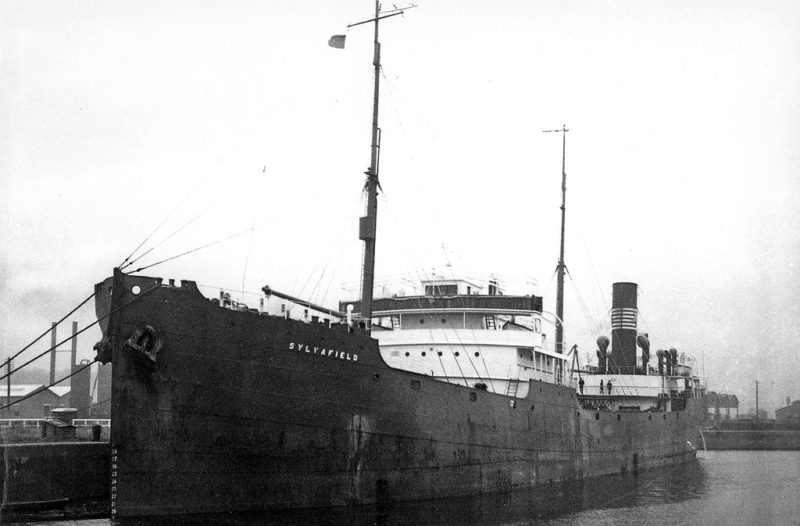
A NEW CENTURY
At the beginning of the new century, the chartering of the tankers was left to Edward Aisbett Gibson, founder of the Gibson chartering brokers and a friend and business associate of Charles Samuel Hunting. The two men travelled together to the North American oilfields and the Black Sea oilfields to study the oil trades. E. A. Gibson & Co. Ltd. was finally purchased by Hunting from the son of the founder in 1925 to become Hunting Gibson Ltd., when Hunting also opened a London office. Duffield was sold in 1901 to the Anglo-American Oil Co. Ltd. (fore-runner of British ESSO and American EXXON), who purchased her to study the practicalities of tankers and renamed her Apalachee. She had a very long active life of over 50 years, being sold to Italy in 1926 and was scuttled in the Gironde estuary by the retreating Germans in 1944.
Charles Samuel Hunting pursued oil exploration prospects in Russia and the U.S.A., built the first batch oil refinery on the Thames, invested in an oil production venture in Hungary, as well as shipping and oil opportunities in the Gulf of Mexico. He led by example, and he operated one of the largest independent tanker fleets in the world flying the blue and white banded funnel with a red star and flag of the Hunting family.
A long-term management contract was signed with two Frenchmen, Fenaille & Despeaux, to manage two tankers to trade across the North Atlantic from the oilfields of the U.S.A. to their refinery at Rouen. Saxoleine of 5,000dwt was completed in September 1899 at the Armstrong Whitworth yard in Newcastle, and was joined by Petroleine of 6,000dwt in 1908 from the Tyne Iron yard. The management contract ran for thirty years until 1929, and the pair could also carry grain and similar dry bulk cargoes when no oil was available. The tank lid coamings were rivetted to a large steel hatch cover, which could be removed for loading or discharging dry cargo.
A Russian businessman named Dvorkovitz claimed to have large oil deposits at Baku, and Hunting ordered a small tanker named Minoco at the end of the century from Tyne Iron yard, but no oil was forthcoming and she was sold in 1901 to the Anglo-American Oil Co. Ltd. to become the first ever oil tanker on the Great Lakes. Dry cargo tramps were also added to the fleet, some to one ship limited liability companies and some under the 64ths principle. A fleet of thirteen tramps was being managed at the turn of the century, of which six were oil tankers. In 1906, two Doxford ‘Turret’ tramps were delivered, Duffield and Garfield of 6,600dwt, their unusual shape allowed savings to be made in Suez Canal tolls.
On 20th March 1914, the Hunting Steamship Co. Ltd. was formed with all ships operating under the 64ths principle transferred to it with Hunting & Son as managers. At the outbreak of World War I, the fleet consisted of six tankers named Oilfield, Bloomfield, Clearfield, Saxoleine, Petroleine and Aureole, with two dry cargo ‘Turrets’ named Duffield and Garfield. Two of these were torpedoed and sunk with two others badly damaged, and a purchased small tanker Artesia was also lost together with the dry cargo tramp Garfield.
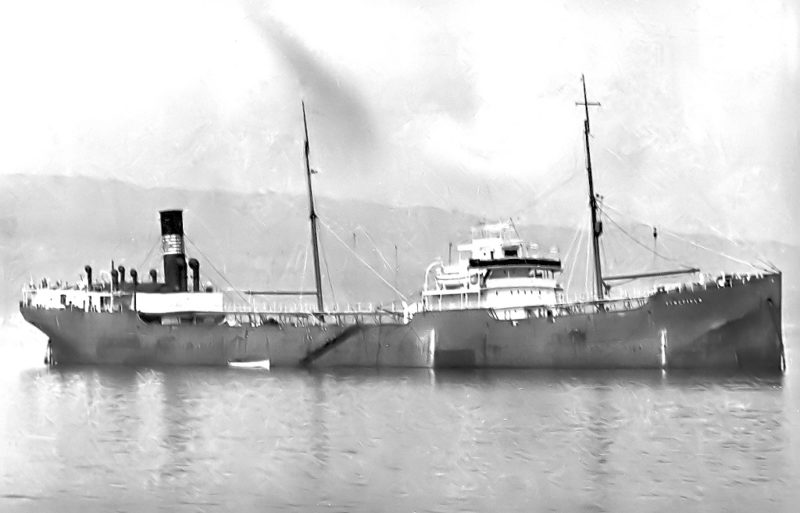
The ships lost during World War I were:-
Clearfield on 24th October 1916 when torpedoed and sunk off the Flannan Islands in the Outer Hebrides while on a voyage from Invergordon to Hampton Roads in ballast, 36 crew lost.
Garfield on 15th January 1917 when torpedoed and sunk 60 miles North East by North of Alexandria while on a voyage from Malta to Port Said with coal.
Artesia on 8th February 1918 was captured 190 miles North East of Madeira while on a voyage from Cette to New York in ballast, and was sunk by bombs six days later.
Oilfield on 16th March 1918 was torpedoed and damaged 15 miles North West of Cape Wrath while on a voyage from Grangemouth and Methil to New York in ballast, she was beached and refloated but became a total loss.
Aureole was badly damaged by a torpedo in the Little Minch in November 1917 and needed an almost complete rebuild.
Petroleine was carrying a cargo of benzine (petrol) from New York to Le Havre when a time bomb placed in the forward dry cargo hold exploded off Cherbourg, killing eleven crew in the fo’c’stle. She was so badly damaged that a complete new bow had to be built, and after repair she was then attacked in March 1918 by a U-boat while returning from Rouen to New York, having called at Plymouth for coal bunkers.
The need for petrol in France was so urgent at this time, and tankers were often not made gas free when empty, and the slightest spark meant doom for Petroleine and her crew. The convoy had dispersed at 15 degrees West when two gunfire shots were heard and two splashes landed next to the tanker. Capt. Lowe and his officers were on the bridge taking noon sights when the U-boat was sighted two points on the starboard beam. She was firing two guns, one forward and one aft, and her shells soon straddled the tanker with several near misses under the stern, drenching the four inch gun crew. Unfortunately, the attack happened at a change of watches and the head of steam was not at its best, but the Chief Engineer and his three engineers fired the furnaces, and Petroleine was soon going faster than she had done on trials. An irregular zig-zag was steered to put the U-boat off target and gradually the distance between them increased and Petroleine escaped, having surviving a battery of over 100 shells.
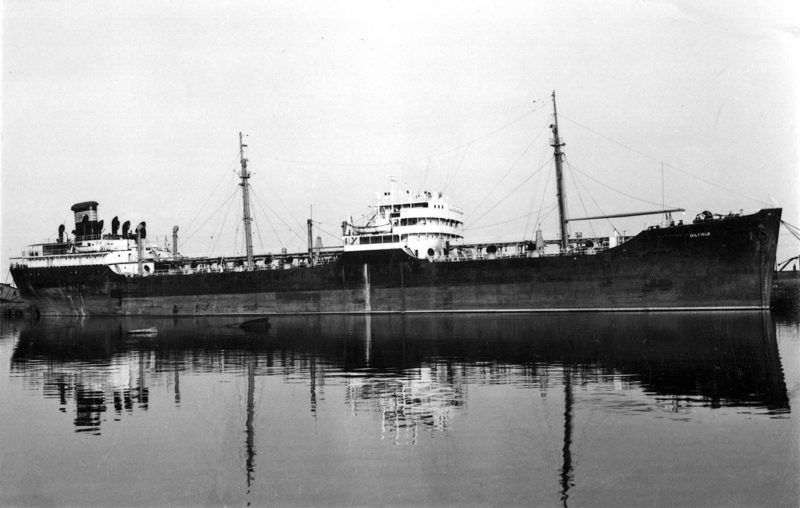
THE INTER-WAR YEARS
The company managed seven ‘WAR’ class fleet tankers for the British Government from the end of the war, three of them remaining under management until 1937/38.
The fleet at the time included the owned tanker Bloomfield of 4,455grt, the dry cargo ‘Turret’ tramp Duffield of 3,838grt, and the managed tankers Petroleine of 4,205grt and Saxoleine of 3,759grt, the latter pair remaining managed until sold in 1928 and 1925 respectively. Duffield was also sold off in 1925, and the company became purely operators of tramp tanker tonnage.
Charles Samuel Hunting had two sons in Percy and Gerald Lindsay, with Percy as the Senior Partner in 1919 in the business, and he set up the Hunting Steamship Company (1919) Ltd. with an issued capital of £100,000 in £25 shares.
He also diversified the business by taking the company into aircraft servicing and manufacture, and some years later set up an airline business named Hunting-Clan Air Ltd. in joint partnership with Clan Line. During the 1930s, Percy and Lindsay Hunting financed exploration and production oil ventures in Texas.
The Hunting family lived at Slaley Hall, six miles south of Hexham on a south facing hill and surrounded by one thousand acres of Northumberland forest, moorland and hills. Slaley Hall is a large, Tudor style castellated mansion, and was built for the family as a Northumbrian country residence between 1911 and 1914, and laid out with beautiful flower gardens, a Japanese rock garden, as well as nurseries by the world-renowned Backhouse Nurseries of Acomb.
Charles Samuel Hunting lived at Slaley Hall until his death in 1921, Gerald Lindsay Hunting also lived at the Hall after being badly wounded at Ypres and was discharged from the Army but joined the Royal Flying Corps where he served until the end of the war. Percy Hunting lived at nearby Colpitts Burn.
Slaley Hall was sold by the Hunting family after World War II, and today is world famous as a hotel, spa and golf resort, and has hosted several world class golf tournaments around the main ‘Hunting’ course, named after the family. The extensive grounds have large wooden lodges for sale or rent.
Four tankers of around 8,000 dwt were completed between 1923 and 1925, two from the Tyne Iron yard in Oilfield and Wellfield, and two from the Sir James Laing yard in Sunderland in Sylvafield and Tynefield, at a cost of around £300,000 each.
Oilfield was a steamer with oil burning, super-heated geared turbines linked to a single screw, and was the first tanker built for the company on the Isherwood system of longitudinal framing for additional strength.
Wellfield was the first motor tanker in the company fleet, and the only twin screw vessel ever owned. She was badly damaged by a grounding at the entrance to the Bosphorus in February 1931, but was refloated and brought back to the Tyne for repairs. The opportunity was also taken to lengthen her by 24 feet and add another tank while at the yard of Smith’s Dock Co. Ltd. at North Shields.
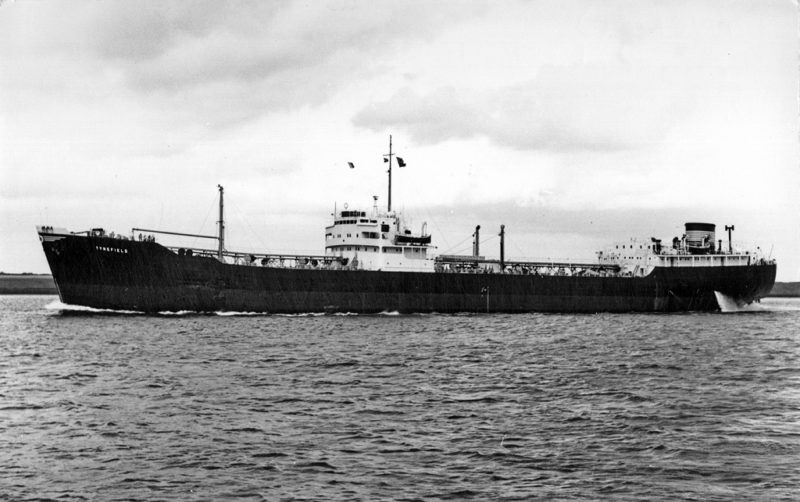
Sylvafield and Tynefield were completed with four cylinder two stroke cycle single-acting Doxford oil engines, and were on charter for many years to the Anglo-American Oil Co. Ltd.
These charters were unusually annually renewed voyage charters. They had a fixed freight rate for as many North Atlantic voyages as they could make in a year. The charterers owned several motor tankers which experienced engine trouble at this time, but the trouble free Newcastle pair decided them to have Doxford engined tankers at a later date.
Tynefield experienced two hurricanes and two storms in December 1929 in the North Atlantic, and she heaved to on all four occasions. She was bound from Baytown in Texas to Barrow with light oils when the barometer suddenly dipped to a very low 27.9 inches, course was altered to bring the wind on the port bow and speed was reduced, the action of the right handed propeller tending to keep her head up to the wind and sea. At 0700 hours on the next day, the wind had reached hurricane force and the bow was completely obscured by spindrift.
A series of squalls then assaulted the tanker with the seas built up into mountainous walls of water which hit her with such force that her head was thrown six points off the wind.
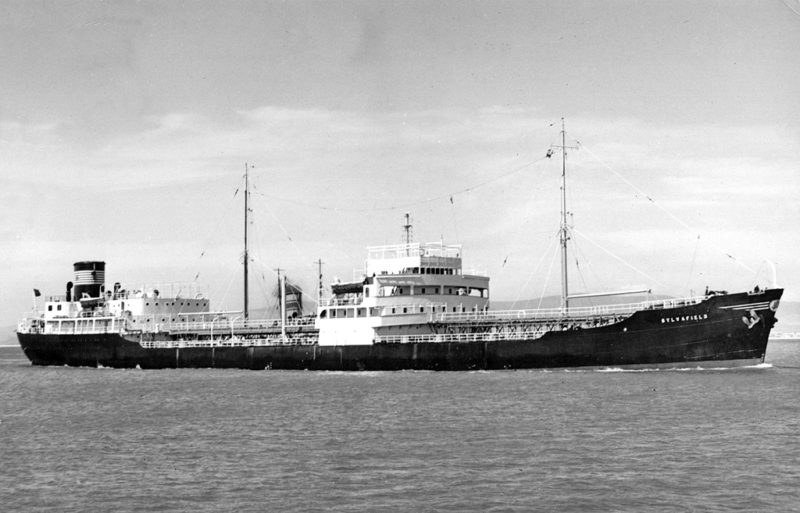
Fortunately, after each squall the terrific force of the wind flattened out the sea, and her head was returned to two points off the wind before the next squall hit.
Tynefield was pounded by the hurricane until 1700 hours, smashing the port lifeboat to matchsticks, with the ‘midships structure badly damaged and dented. Similar action was taken on the three succeeding gales, and as she was a reporting ship for the American Weather Bureau her warnings to steer clear of the area saved many ships, although several distress calls were heard. On arrival, she missed the spring tides at Barrow and had to spend another week at anchor to the north of the Isle of Man.
Gretafield, a large tanker of 15,760dwt, was completed by Cammell, Laird & Co. Ltd. at Birkenhead as one of the first tankers to be built with two fore and aft bulkheads dividing the cross-section of the ship into three tanks. Previously, tankers only had one fore and aft bulkhead in the centre of the ship. She was on time charter to United Molasses Co. Ltd., which had their own Athel Line of tankers, for the first three years of her career carrying molasses from Java to the U.K.
Clydefield of 9,634dwt was delivered on the Clyde during the same year of 1928, but was lengthened by thirty feet during 1935 by Smith’s Dock Co. Ltd. at North Shields, increasing her deadweight to 10,825 tons. She had been laid-up along with most of the company fleet at Lamlash Bay on the east side of the Isle of Arran between 1930 and 1932, but the worst of the very low freight rates for tankers was over by the end of 1932, and the whole fleet was back at sea in 1933.
The company fleet in 1932 comprised six tankers, with three further ‘War’ tankers managed for the British Government in War Sepoy, War Mehtar, and War Sirdar. Three owning tanker companies were as follows:-
Field Tank Steamship Co. Ltd. – Oilfield and Wellfield
Hunting Steamship Company (1919) Ltd. – Clydefield and Tynefield
Northern Petroleum Steamship Co. Ltd. – Gretafield and Sylvafield
Three new tankers of 12,000dwt joined the fleet in 1938/39 from Scandinavian yards in Oilfield, Duffield and Pontfield, the latter tanker having to be sailed through the German blockade of the Skagerrak in October 1939 to be delivered via Bergen. This trio and the other owned tankers of Wellfield, Sylvafield, Tynefield, Gretafield and the Clydefield, together with the coastal tanker Creofield formed the fleet at the end of 1938.
Creofield was undergoing lengthy repairs at the yard of Smith’s Dock Co. Ltd. on 31st October 1938, while Wellfield was undergoing extensive engine repairs at the Wallsend yard of North Eastern Marine Co. Ltd. at the same time.
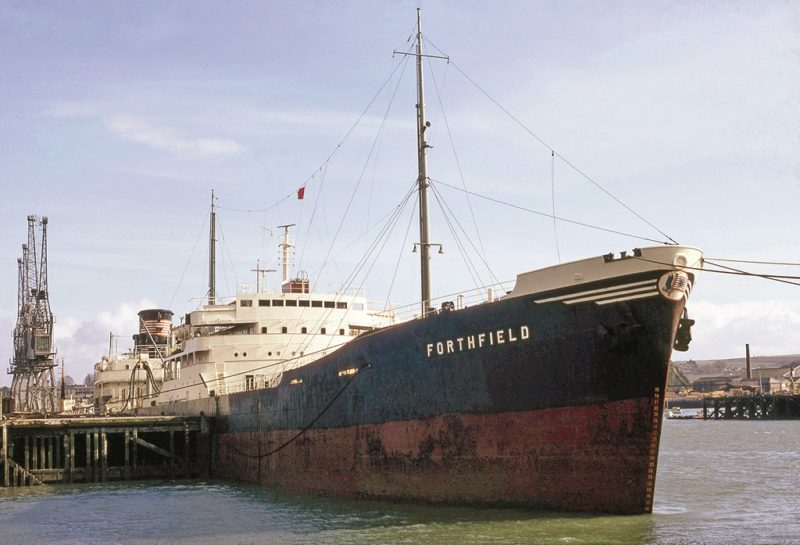
WORLD WAR II
Six owned tankers and several managed tankers were lost during this long war, together with 116 brave men, with 25 of these men decorated for bravery in the face of the enemy. The lost owned ships were:-
Creofield mined off Yarmouth on 1st February 1940 while on a voyage from Southend to the Tees with the loss of all hands.

Gretafield torpedoed and sunk off Wick on 14th February 1940 while on a voyage from Curacao to Invergordon with fuel oil, eleven crew lost.
Duffield torpedoed and sunk on 9th April 1941 to south west of Madeira while on a voyage from Curacao to Gibraltar with fuel oil, 25 crew lost.
Oilfield torpedoed and sunk south of Iceland on 28th April 1941 while on a voyage from Aruba to London with fuel oil, 47 crew lost.
Wellfield torpedoed and sunk in the North Atlantic on 4th June 1941 while on a voyage from Liverpool to Curacao in ballast, eight crew lost.
Tynefield mined in the Suez Canal on 5th October 1941 and broke in two on a voyage from Abadan to Suez with diesel oil, crew saved.
The horrendous end of Oilfield proved the point that the U-boats always attacked the easiest targets-the tankers. She had sailed from Halifax (NS) in an east bound convoy of fifty ships, and was the second ship in the outside column on the port side. All went well until 28th April 1941 when approaching Rockall a ship was torpedoed in the middle of the convoy, and began to settle and was left behind with a destroyer escort. Two hours later at 1730 hours, Oilfield was torpedoed and became a roaring mass of yellow and orange flames in a few minutes. Six men were left standing on the only six feet of the ship that was not enveloped in flames-the fo’c’stle-and they were surrounded on three sides by a fat approaching sea of flame. A trawler tried to back in to save them, but it was an impossible task even after she released her stern depth charges.
Five of these men were picked up from the water, and they were the only survivors from a crew of 52. Capt. L. A. Larsen, Commodore of Hunting, was lost, he had been the Master of the company refuelling tanker that had accompanied the battlecruiser Repulse on tour with the Prince of Wales in peace time.
The eleven dead in the blazing wreck of Gretafield that drifted ashore near Wick were all from Wick, and were buried in their own graveyard. Duffield under Capt. Manthorpe, had been proceeding from Curacao to Gibraltar with fuel oil for the Admiralty, zig-zagging at twelve knots when she was torpedoed on the port side. No-one was injured and she was still able to steam at her full speed, and she shelled the U-boat after it surfaced astern of her. However, at 2300 hours, she was mortally hit by four more torpedoes, with two exploding in the engine room, and she sank stern first extinguishing the flames as she sank.
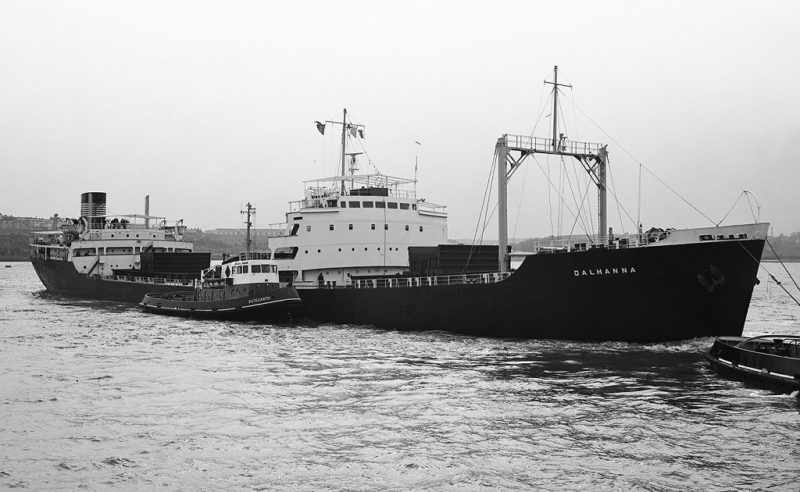
The 27 survivors from her crew in one lifeboat hoisted a sail and after eight and a half days the island of Hierro in the Canaries was sighted. They had only four gallons of water left, and a Spanish sloop took them to Tenerife, where Capt. Manthorpe spent seven weeks in hospital having treatment to a badly injured left leg. After ten days in the sunshine of Tenerife, his crew went home to Newcastle.
Tynefield under Capt. Carr went out to Alexandria in January 1940 on station as a flet oiler, and carried diesel oil and heavy fuel oil to destroyers, cruisers and battleships in the Eastern Mediterranean. During the siege of Tobruk, she was used for the storage of fuel in that port until a direct hit from an Italian bomber damaged her and forced her return to Alexandria in February 1941. Eight months later, while returning from Abadan in convoy, she struck a mine in the Suez Canal, and her stern was towed to Port Tewfik and abandoned as a total loss.
Miraculously, Clydefield and the new Pontfield survived the onslaught, as did several Laing built tankers from Wearside that were managed by the company. These were Empire Silver, Empire Marvel and Empire Coral, which became Sylvafield, Bloomfield and Derwentfield in 1945/46 alongside the similar war built Wearfield and Thamesfield. The fleet was brought up to strength in 1947 with the purchase of two turbo-electric American built ‘T2’ types renamed Oilfield and Edenfield.
A war memorial to the 116 Hunting crew lost during the war was erected in Newcastle in memory of these brave men, and today hangs in the Discovery Museum in Blandford Square and previously hung in the Trinity Maritime Centre on the Quayside in Broad Chare for many years. It consists of a large wooden mahogany board with a gabled top and a painted inscription in gold lettering, with flags depicted at the top including the company houseflag at top centre. The board is divided into three panels, in the outer panels the names, ranks and nationalities are listed in one column below the names of the ships. In the central wider panel, the names are listed in two columns. At centre bottom is a carved panel with all lettering painted in gold using Roman capitals.
The inscription reads:-
‘Roll of Honour 1939/45 in grateful memory of the Merchant Navy employees of Hunting & Son Ltd., who gave their lives in the cause of freedom’.
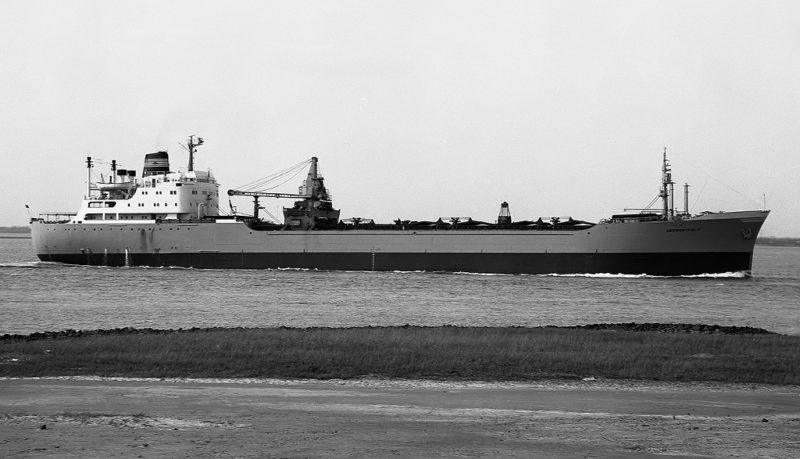
POST-WORLD WAR II YEARS
A large replacement and expansion programme of new tankers was begun in 1950 with the first of ten British built tankers, as follows:-
- Harland & Wolff Ltd., Belfast (2) Laganfield, Clydefield
- Furness Shipbuilding, Teesside (2) Wheatfield, Gretafield
- Hawthorn Leslie, Hebburn (2) Tynefield, Forthfield
- W. Doxford, Sunderland (2) Avonfield, Sylvafield
- Smith’s Dock, Middlesbrough (1) Duffield
- James Laing, Sunderland (1) Huntfield
The economies of fuel oil consumption in this class of ten tankers was a result of improved designs of Doxford and B & W oil engines, together with lower manning costs for long term charters to the oil majors. Avonfield of 16,800dwt was typical of this group of ten tankers when she was launched from the William Doxford yard at Pallion in Sunderland on 21st October 1952 as Yard number 794 for Eden Tankers Ltd. of Newcastle. She was completed in May 1953 on dimensions of overall length 538.9 feet, moulded beam of 70.0 feet, moulded depth of 39.9 feet, and a loaded draft of 30.0 feet. A five cylinder 2SA Doxford diesel engine gave her a speed of 14 knots during her twelve year career with the company before being sold to Greek owners in 1965. Duffield and Gretafield were converted into dry cargo bulkers in 1960 at the yard of Smith’s Dock Co. Ltd. at North Shields. Seven of the ten tankers had been sold by the end of 1966, with Clydefield sustaining heavy damage when fire broke out on 17th November 1964 while she was discharging at Cutuco in El Salvador, and then she was towed to Japan for breaking up.
The last tanker delivered was Forthfield in April 1955, and she gave twenty years of service before sustaining considerable bottom damage in a grounding in the Orinoco river on 27th January 1975, and she was towed to Burriana in Spain for breaking up. Two ore carriers, River Afton and Alhanna, came under Hunting management in 1959 after their previous managers Campbells (Newcastle) Ltd. had been acquired.
Sir Percy Hunting retired as Group Chairman in 1961, and his brother Lindsay Hunting took over as Chairman for one year until he became seriously ill and disabled and also retired. The sons of both men took over the management roles of the company. Sir Percy Hunting had built a worldwide shipping and aviation empire, and on his retirement he received a knighthood in 1961 as a tribute to all of the family and his wife Pat Hunting. Petroleum retailing, lubricants and specialised oil products were added to the portfolio later in the 1980s at the end of the shipowning era. The structure of three Hunting companies was simplified in 1989 by Clive Hunting, when all of the companies were merged into the present Hunting PLC. His nephew, Richard Hunting, subsequently succeeded as Chairman, and has made the Hunting name into a world leader in the upstream energy services sector.
The unusual profile of the engines aft self-discharging turbine powered salt carrier Argyll was managed from new in 1962 while trading from Cedros Island off Mexico to Vancouver and Tacoma. She had a unique unloading system using three very large travelling ship unloaders on deck and conveyor belts from the holds. The converted ‘T2’ type tanker Coral Venture was managed while trading as a cement carrier on three trips per week from the Bahamas to Port Everglades or Jacksonville.
A dry cargo bulker of 14,200dwt was added to the fleet in 1957 as Inverfield from the Rickmers Werft yard in Germany with diesel engines by Bremer Vulkan, together with three tankers in 1958/59 as the Teesfield of 18,770dwt from the Furness Shipbuilding yard, Eskfield of 28,600dwt from Harland & Wolff (Govan), and Thamesfield of 33,880dwt from Hawthorn Leslie. Eskfield was launched on 21st May 1959 as the last and largest ship built by the Govan yard, and was jumboized by the Belfast yard of Harland & Wolff Ltd. to increase her deadweight to 33,760dwt in 1965, and three years later she was sold and renamed Torero.

The B30 six hold bulker Wearfield of 28,390dwt was launched at the Southwick yard of Austin & Pickersgill Ltd. on 24th Aptil 1964 as Yard number 837. She was a geared bulker equipped with four electric cranes and had dimensions of overall length of 617.0 feet, moulded beam of 75.4 feet, moulded depth of 48.0 feet, and a loaded draft of 34.8 feet. She was given a six cylinder 2SCSA Gotaverken oil engine of 7,500 bhp to give a service speed of 15 knots, which gave some trouble breaking down on occasion. I was friendly with one of her crew, and after she was sold in 1973 to Ben Line and renamed Benhiant, he purchased a house from me.
The tanker Edenfield of 63,600dwt joined the fleet in 1965 and was taken on a ten year charter by the Admiralty as Dewdale. A new bulker of 20,920dwt was purchased on the stocks in 1967 of the Uljanik yard at Pula in Jugoslavia and renamed Avonfield. In the same year, Derwentfield built in 1959 with a combination of tallow tankers and dry cargo holds was purchased. The pair were used on a contract to ship half a million tonnes of sulphur and potash from the U.S.A. and Canada to Geelong near Melbourne. The trading fleet in early 1969 was thus:-
Derwentfield was dry-docking in Japan. Duffield was loading phosphate at Nauru for Melbourne.
Gretafield was loading zinc concentrates at Port Pirie for Avonmouth. Wearfield was discharging timber from British Columbia at Philadelphia and New York.
Forthfield was dry-docking on the Tyne. Thamesfield had sailed from Puerto Miranda in Venezuela with crude oil for Hamburg.
Teesfield had sailed from Puerto de la Cruz in Venezuela with a cargo of gasoline for Rio de Janeiro and Santos in Brazil.
Edenfield was on charter to the Royal Fleet Auxiliary (RFA) as Dewdale.
Dalhanna an ore carrier was on charter to BISCO with iron ore from Murmansk, Narvik, Monrovia, Seven Islands, Lulea in the Gulf of Bothnia in Sweden, and other ports to U.K. blast furnaces.
Avonfield on a voyage from San Diego with sulphur for Geelong, then coal from Newcastle (NSW) to Japan.
In April 1972, the ore/oil/bulk Tyne Bridge of 166,750dwt was completed on the Tees at Haverton Hill by Swan Hunter Shipbuilders Ltd. as one of a class of six ships that were to be investigated for design faults following the loss of sister Derbyshire (ex Liverpool Bridge) in 1980 with all of her crew of 42 plus two wives.
Tyne Bridge was on charter to the Seabridge consortium, of which Hunting was a founder member in 1966, along with Bibby Line, Bowring, H. Clarkson, Houlder Brothers and Silver Line. The class had dimensions of overall length 294.2 metres, moulded beam of 44.3 metres, moulded depth of 25.0 metres, and a loaded draft of 18.44 metres. They had nine holds, and eighteen sliding hatch covers, and were powered by a B & W 8K98FF diesel engine of 30,400 bhp to give a loaded speed of 15 knots. The other giant OBO sisters were Furness Bridge, English Bridge, Sir John Hunter and Sir Alexander Glen.

Tyne Bridge was given a grey hull for her launch on 2nd November 1971, and she began trading with iron ore in April 1972, but suffered a severe engine room fire off the coast of Chile on a voyage from Cape Town towards the end of 1972. The wiring in the engine room was badly damaged, and there was plenty of scrap copper wire for disposal when she arrived at Valparaiso. She later suffered a major explosion in number 8 hold in the Sea of Japan, and was also damaged when she struck an iceberg in Belle Ile Strait while on a voyage from Immingham to Sept. Iles in ballast to load iron ore. The damage to her bulbous bow, forepeak and fore deep tanks was extensive, and she was repaired and later sold to Siosa of Italy in 1980 out of lay-up at Itea in Greece, and was chartered back for two years while retaining her name and carrying iron ore from Tubarao in Brazil to Europe. She was renamed East Bridge in 1985, and was broken up at Kaohsiung in 1987.
The tanker to bulker conversions of Duffield and Gretafield had been sold off, and the remaining members of the Hunting fleet at the end of 1973 were on the following voyages:-
Forthfield was trading in the Far East on time charter to Shell.
Thamesfield was trading from the Persian Gulf on time charter to Shell.
Teesfield was on single voyage charters around the Mediterranean and Continent.
Tyne Bridge was on passage from Kharg Island with crude oil to Finland.
Edenfield was still on charter to the R.F.A. as Dewdale.
Avonfield was on a voyage from the Gulf of Mexico with grain and steel to the Continent.
Derwentfield was on a voyage from Long Beach and San Francisco to Japan and the Philippines with tallow, iron ore and machinery. She returned to Long Beach with copra and coconut oil.
Tweed Bridge of 125,950dwt with a loaded draft of 17.5 metres was launched at the Hiroshima yard of Mitsubishi for the Field Tank Steamship Co. Ltd. on 21st December 1973. She was renamed Tweedfield after her charter to the Seabridge consortium was ended in 1978 shortly before she was sold to Liberian flag owners.
The tanker Thamesfield left the Tyne for breaking up at Inverkeithing by T.W. Ward Ltd. on 9th January 1976. Teesfield also was sold for breaking up at Inverkeithing arriving on 26th January 1978 from the Tyne.
Edenfield came off her R.F.A. charter in 1977 and regained her name to load a few cargoes of crude oil in the Tees for U.S.A. refineries before being sold off in 1978. The bulkers Avonfield and Derwentfield were sold for further trading in 1976 and 1978 respectively.
The fleet was joined in 1977 by its last newbuilding Thamesfield of 50,200 dwt, a forestry products carrier from the Flensburg yard in Germany and traded from Port Alberni and Vancouver to Tampa in Florida with timber. She was still very much a member of the Hunting fleet when trading from British Columbia in 1981.
In that year, an offer came suddenly from a company which had a 29% holding in Stag Line of North Shields to sell these shares to Hunting, this was from Ropner Holdings Ltd. of Darlington. Hunting was then able to make a successful bid of £5.3 million for Stag Line, and this was accepted by the Stag Line directors of the Robinson family as being in the best interests of all concerned. Stag Line became a wholly owned subsidiary of Hunting Gibson Ltd. in April 1981, and Hunting Stag Management Ltd. was then set up in Newcastle to absorb the sea-going and shore-based staff of the two companies and to manage the Hunting and Stag Line dry cargo fleets.
Hunting Stag Management Ltd. was sold in July 1982 to James Fisher & Sons Ltd. of Barrow for £3.8 million with £2 million in cash, £800,000 in Fisher shares, and the balance in the form of a Bill of Exchange which matured on 30th June 1984. The price included bulker Thamesfield and a Stag Line coaster but not the last two Stag Line bulkers, which were sold a year later to Singapore shipowners.
Thamesfield was registered under James Fisher & Sons Ltd. from 1st July 1984, and the Newcastle office of Hunting Stag Management Ltd. closed for the last time in March 1985 and moved to Barrow. Thus, the very long-lasting fleets of Hunting and Stag Line had come to an inevitable ending, and the famous Hunting houseflag of a seven-pointed blue star on seven red and white narrow bands to signify the seven oceans of the world would fly no more.
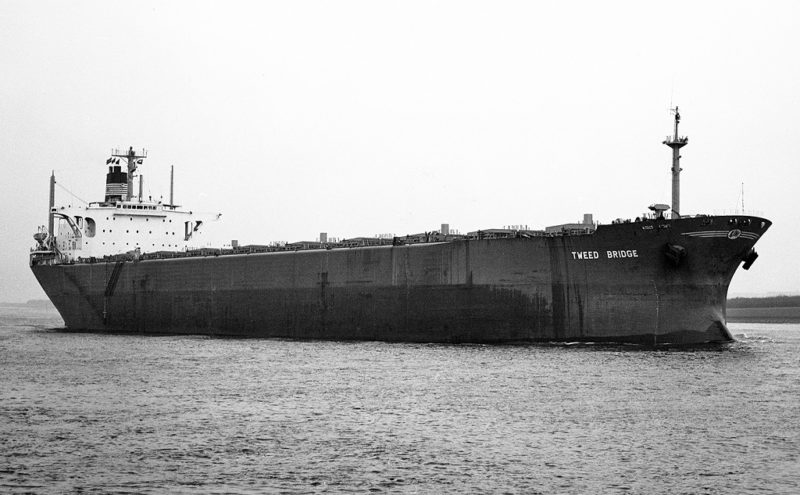
SUMMARY
The proud Hunting funnel and houseflag colours had been seen around the world for 110 years between 1874 and 1984. The very big Hunting dry cargo and tanker fleets were the only British tramp fleets whose owners also operated an air fleet. This was begun in 1937 in conjunction with Clan Line as Hunting-Clan Air Ltd., and soon afterwards the Hunting family invested in another aviation company, with the total in the air sector being eventually thirty companies, which covered every aspect of aviation from the building of aircraft to their repair and operation. The Hunting-Clan Air Ltd. jointly owned aircraft fleet was used for passenger travel and aerial survey, but was sold off at the end of the 1950s decade together with other aviation companies.
Hunting Engineering then became a defence contractor, Gibson Petroleum Company began drilling in Alberta in Canada to extract and market crude oil, and Hunting Oilfield Services began in the late 1960s to machine and repair oilfield pipes and connectors in the North Sea oilfields.

The Hunting Group of companies remains 27% owned by the Hunting family, and is a listed company with an innovative portfolio of products to enable oil and gas extraction worldwide e.g. perforated connection systems for upstream construction of deep oilwell drilling, oil and gas aerospace power generators, and subsea technologies. The famous name of Hunting continues to forge ahead in many of the very latest technologies that Charles Hunting could only marvel at 150 years ago
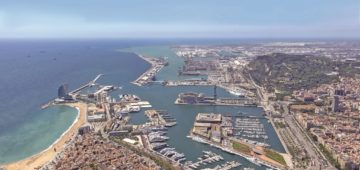



Comments
Sorry, comments are closed for this item